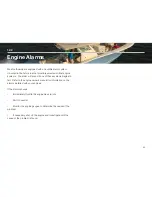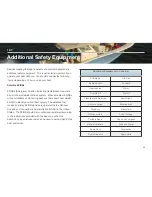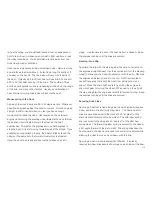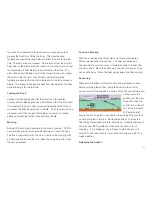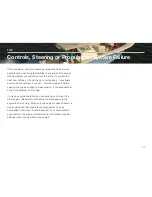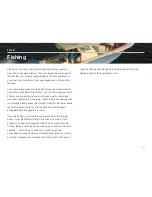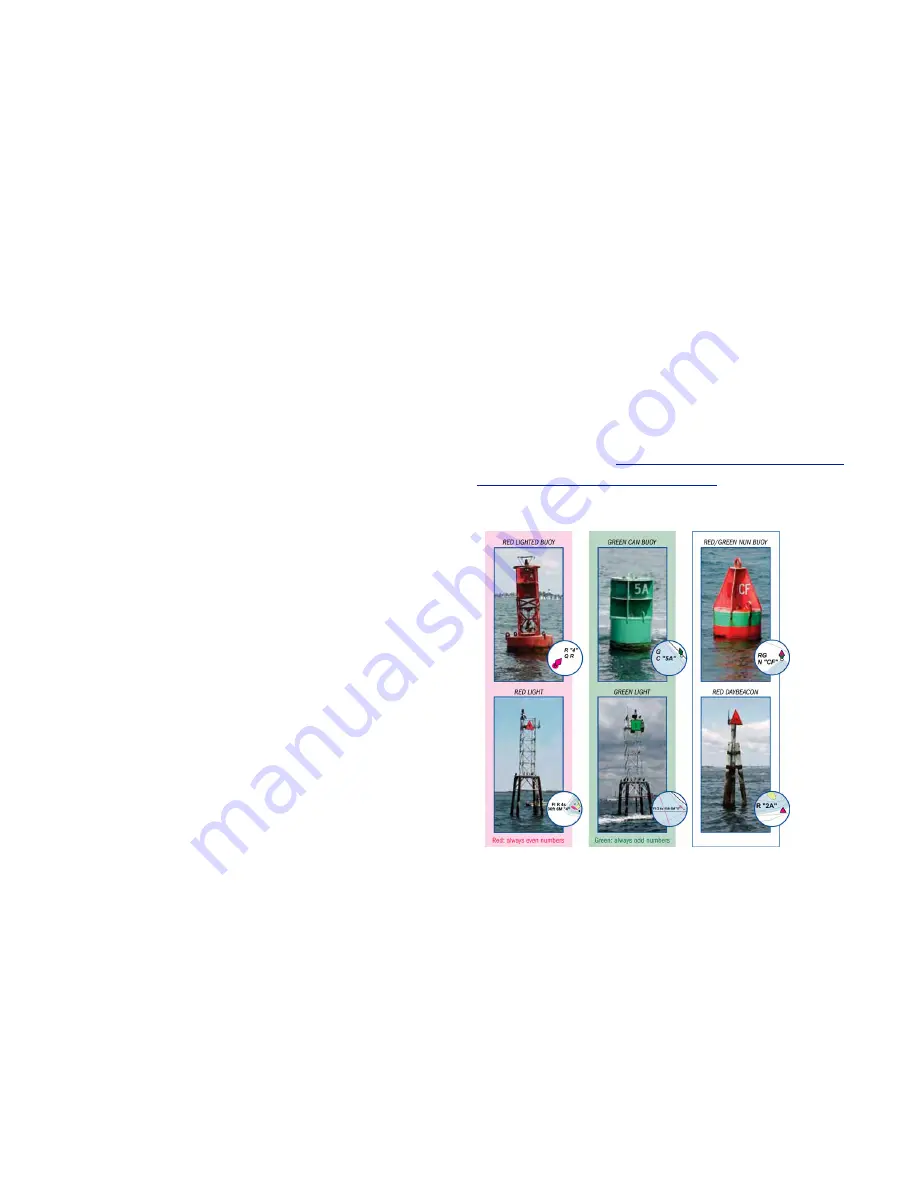
justify a departure from the rules that is necessary to avoid
immediate danger or a collision.
Night Operation
Recreational boats are required to display navigation lights
between sunset and sunrise and other periods of reduced
visibility such as fog, rain, haze, etc. When operating your boat at
night you should:
•
Make sure your navigation lights are on and working
properly. Navigation lights warn others of your position and
course and the position and course of other vessels.
•
All navigation rules apply. If the bow light of another vessel
shows red, you should give way to that vessel, if it shows green,
you have the right of way.
•
Slow down and never operate at high speeds when
operating at night, stay clear of all boats and use good common
sense. Always be ready to slow down or steer clear of other
vessels, even if you have the right-of-way.
•
Avoid bright lights that can destroy night vision, making it
di
ffi
cult to see navigation lights and the lights of other boats. You
and your passengers should keep a sharp lookout for hazards,
other boats and navigational aids.
Navigation Aids
Aids to navigation are placed along coasts and navigable waters
as guides to mark safe water and to assist mariners in
determining their position in relation to land and hidden dangers.
Each aid to navigation is used to provide specific information.
You should be familiar with these and any other markers used in
your boating area. See
http://www.uscgboating.org/assets/1/
workflow_staging/Publications/486.PDF
for a more
comprehensive list.
Note:
Storms
and wave
action can
cause
buoys to
move. You
should not
rely on
buoys
alone to
determine
your
positio
102
Summary of Contents for 320 LXF
Page 1: ...320 LXF Scout Boats OWNER MANUAL ...
Page 2: ...Chapter 1 Owner s Information Warranty Certification and Boat Information ...
Page 11: ...Chapter 2 Propulsion A guide to your boat s propulsion system ...
Page 32: ...Chapter 4 Fuel System An overview of the fuel system of your boat ...
Page 40: ...Chapter 5 Electrical System An overview of the electrical system of your boat ...
Page 54: ...Chapter 6 Fresh Water System An overview of the fresh water system of your boat ...
Page 59: ...Chapter 7 Raw Water System An overview of the raw water system of your boat ...
Page 65: ...Chapter 8 Drainage System An overview of the drainage system of your boat ...
Page 70: ...Chapter 9 Ventilation System An overview of the ventilation system of your boat ...
Page 73: ...Chapter 10 Exterior Equipment An overview of the exterior equipment on your boat ...
Page 83: ...Chapter 11 Interior Equipment An overview of the interior equipment on your boat ...
Page 88: ...Chapter 12 Safety Equipment An overview of the safety equipment on your boat ...
Page 99: ...Chapter 13 Operation A general guide to operating your boat ...
Page 124: ...Chapter 14 Routine Maintenance A guide to keeping your boat running in good condition ...
Page 147: ...Chapter 16 Appendix Reference documents logs and schematics for your boat ...
Page 154: ...153 ...
Page 155: ...154 ...
Page 156: ...155 ...
Page 157: ...156 ...
Page 159: ...158 ...
Page 160: ...159 ...
Page 162: ...161 ...


